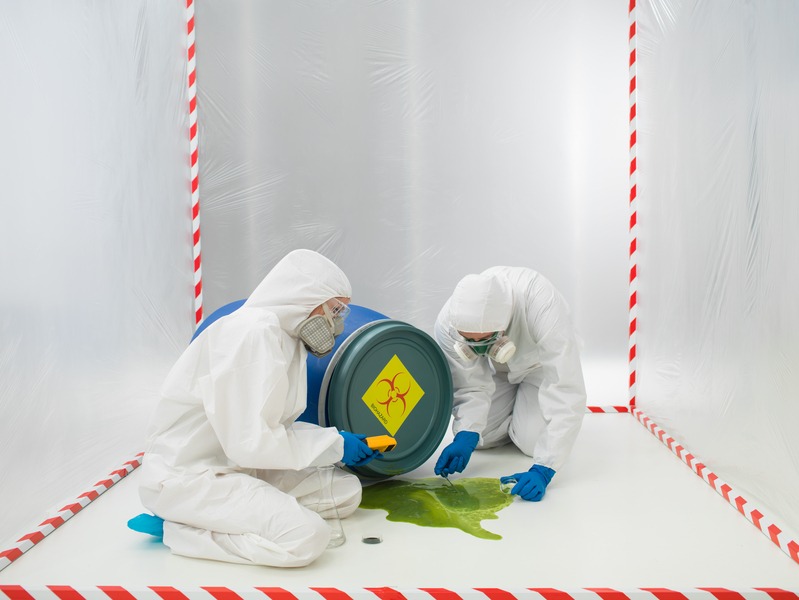By Jennifer Busick
Spills, especially of hazardous material, are a great threat workplace safety. Are your employees trained in their control and containment? Guest columnist Jennifer Busick has tips for employers.
 |
Here’s a scenario: A storm blows through your area, and the strong winds drop a tree on your hazardous waste storage building. A number of containers are damaged, and some materials have spilled. Do you have spill control measures in place? What about secondary containment?
Let’s look at these two environmental, health, and safety strategies—what they are, how they work, and how you could improve them at your facility.
Spill Control
The first line of defense in the event of a liquid spill is spill control. Properly designed spill control systems will keep spilled material from migrating to another part of the room or building. If you are storing individual containers of potentially hazardous liquids with a capacity greater than 55 gallons, or if you are storing more than 1,000 total gallons of potentially hazardous liquids, the storage area must be built with spill control measures in place.
Spill control measures may include:
- Liquid-tight sloped or recessed floors to confine the product.
- Liquid-tight floors provided with liquid-tight raised or recessed sills or dikes.
- Sumps and collection systems.
Other engineered measures or systems may be used if they are approved by the code official.
You’ll need to ensure that floors, sills, dikes, sumps, and collection systems are made of noncombustible material. The liquid-tight seal must be compatible with the material stored. At openings that are not guarded by a liquid-tight sill nor are dikes provided, you can instead use an open-grate trench across the opening that connects to a liquid collection system.
Secondary Containment
In storage areas where the capacity of any individual liquid container exceeds 55 gallons, or where the aggregate capacity of liquid storage exceeds 1,000 gallons, secondary containment is required. Secondary containment is also required in storage areas where the capacity of any individual solid container exceeds 550 pounds, or the aggregate solid storage capacity exceeds 10,000 pounds. Secondary containment must prevent the migration of wastes and contaminated materials to soil, groundwater, or surface water.
Secondary containment must be designed to capture and hold the contents of the largest vessel in storage, or 10% of the aggregate capacity (whichever is larger), plus the amount of water that may be discharged by your fire sprinkler system over a period of 20 minutes (for indoor rooms) or the volume of a 24-hour rainfall as determined by a 25-year storm (in outdoor storage areas). Such a system prevents not only the release of the hazardous material, but also of potentially contaminated rainwater or water from fire suppression systems. Your secondary containment system, then, may be much larger than your spill control system—although the two systems can be built together. A single sump, for example, can serve as both spill control and secondary containment.
Depending on the specific regulatory requirements that apply to your facility, you may also be required to equip your secondary containment with a detection system that notifies you when anything is present in the system, or if a leak is detected in the system.
If you do have a spill, remember: You’ll need to clean it up and remove the spilled material from containment, within 24 hours.
In tomorrow’s Advisor, Busick talks about what employers should do when spill control fails (or when it was inadequate or absent in the first place).
